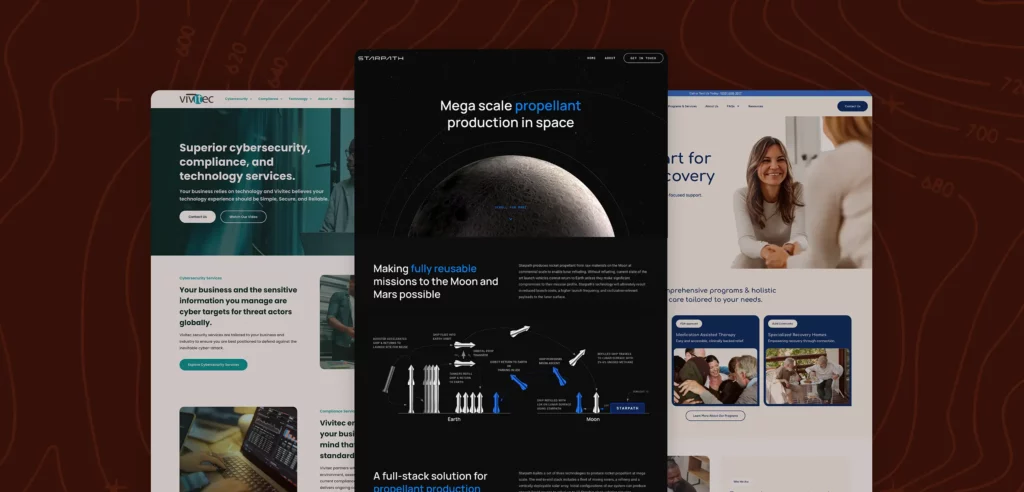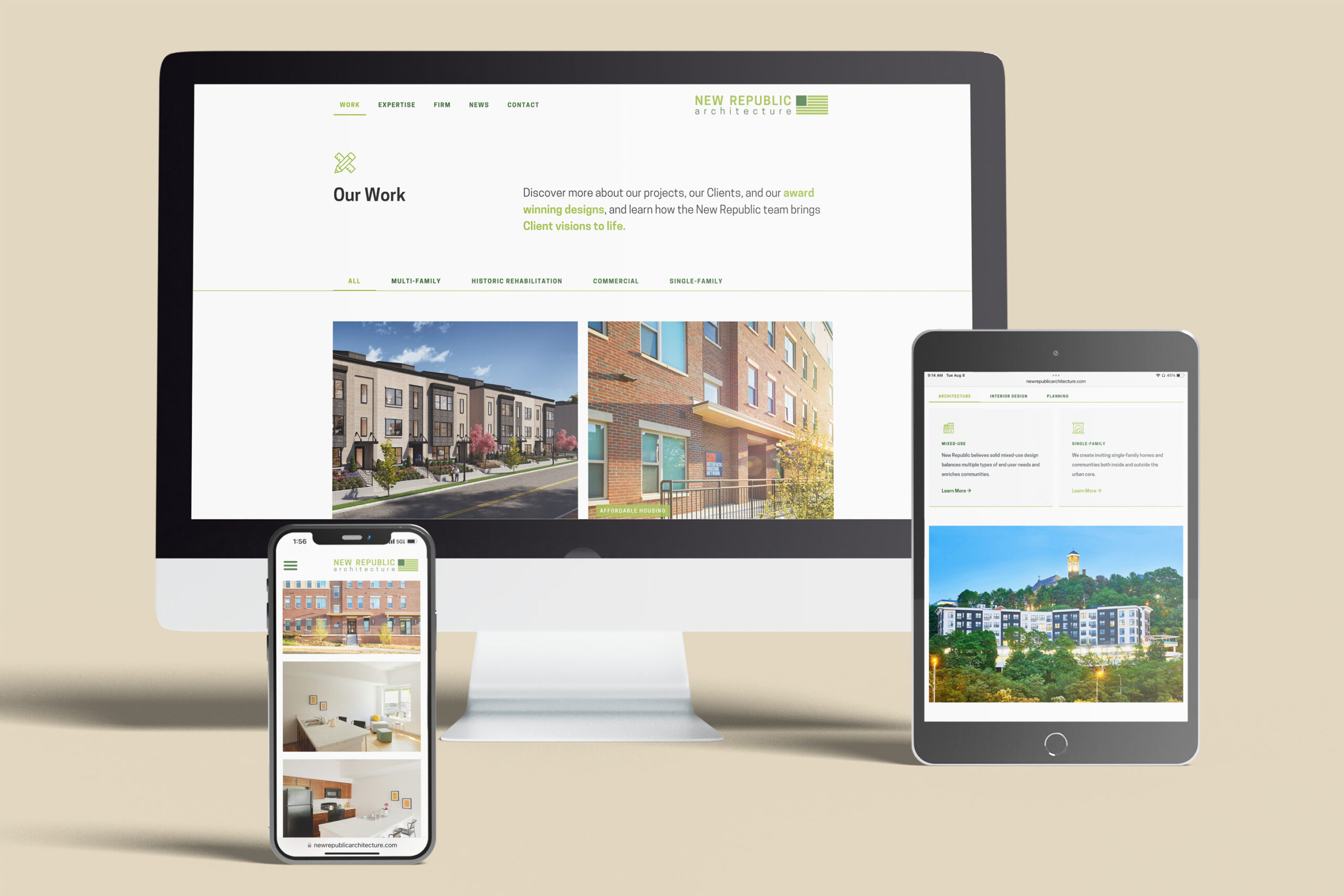If you’re thinking about redesigning or building a new website, one of the first questions is almost always: how much is this going to cost? The truth is, there’s no one-size-fits-all answer. The cost of a website can depend on many variables: the size of the site, how customized it needs to be, the features you need, and how much strategic input and support you want. On average however, for a small business website you should budget between $5,000 and $10,000 and for a mid-sized website, your budget should start at around $15,000 and move up from there depending on your specifications. This will allow you to build a website with the level of quality and planning required for predictable and consistent results. To help you understand what your budget might need to be for your next project, we created a free Website Cost Calculator.
The website cost calculator, paired with the content in this article, can help you explore your options and better understand how marketing and design agencies like ours may determine an accurate budget for your project. Whether you want to experiment with the calculator or just learn more about pricing factors, we’ll walk you through every question in the calculator and explain what’s being asked, why it matters, and how it affects the price of a website build.
Get a personalized estimate for your website project in minutes.
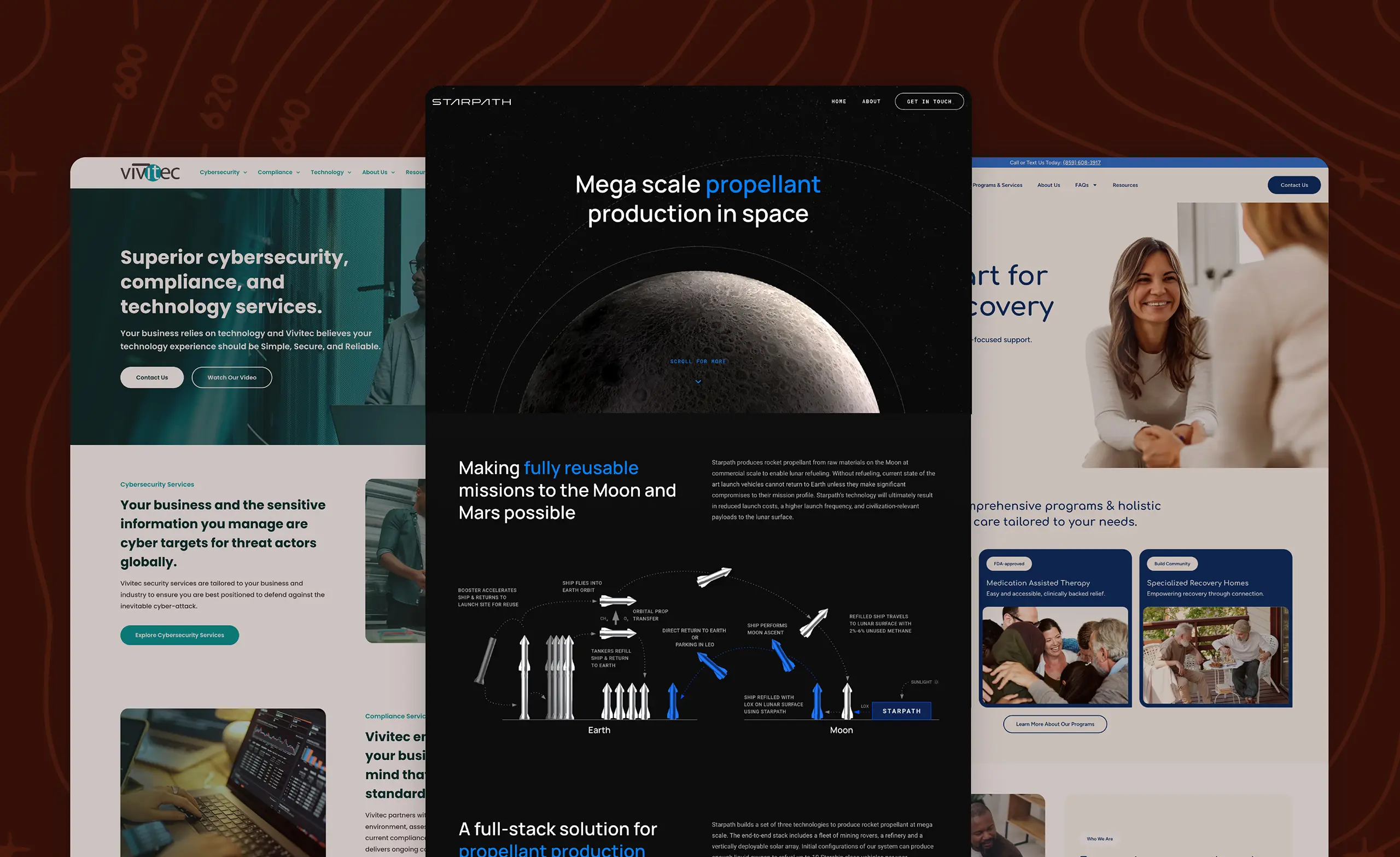

Foundational Project Details
Which option best describes your website?
When planning a new website, one of the first and most important steps is understanding the type of website you need. This question helps us roughly categorize your project based on structure, functionality, and content volume — all of which directly influence how your website should be designed and developed to best serve its purpose.
This high-level classification allows us to recommend the right design and development process from the beginning. It also helps us estimate how much content needs to be migrated or created, what kind of site structure may be needed, and how much planning may need to be done to ensure we don’t lose existing conversion or SEO benefits. A well-defined website type ensures that the design supports both the user’s experience and your business objectives, rather than forcing a generic solution that may not scale or convert well.
Options
Standard Business (20+ Pages): A comprehensive website typically used for mid-size to large businesses offering multiple services, industries, products, etc.
Startup / Small Business (<20 Pages): A compact, foundational website built to establish an online presence and build credibility while being scalable for future growth.
B2C Ecommerce: A product-focused site that sells directly to consumers, requiring product pages, carts, and payment processing.
B2B Ecommerce: A business-to-business storefront with features like account-level pricing, quote requests, and custom workflows.
Restaurant / Bar / Hospitality: A service-focused site often requiring menus, booking/reservation functionality, location info, and a more generic site structure.
Website Cost Factor
The structure and technical requirements of different website types influence both the timeline and cost of development. A simple small business website might only need a few pages and a contact form, while an ecommerce site requires secure payment gateways, inventory systems, and ongoing optimization for user conversions. Understanding the general level of content and site complexity allows us to get a baseline for expected design, coding, testing, and QA time.
What marketing goal(s) or site improvement(s) are top priority for this project?
This question is designed to uncover the strategic purpose behind your website. While websites often serve multiple functions, identifying your top marketing priorities help align design and development recommendations with business outcomes. For example, if your goal is lead generation, we might recommend certain landing pages and form integration. If you want to grow organic traffic, your site needs a content structure optimized for SEO. Clarifying your goals early ensures that your site is more than just visually appealing but that it also works hard to support your business.
Options
Brand Awareness + Credibility: Establish trust and recognition with polished design and messaging that communicates your identity.
Lead Generation + Sales: Focus on converting visitors into leads or customers through forms, offers, and conversion funnels.
SEO + Organic Traffic Growth: Improve search rankings through technical SEO, keyword-rich content, and performance optimization.
User Experience + Engagement: Create an intuitive, fast-loading, and mobile-friendly site that keeps visitors interested and returning.
Content + Thought Leadership: Position your brand as an industry expert by highlighting blog content, guides, and case studies.
Customer Support + Retention: Reduce support tickets and increase customer satisfaction with portals, FAQs, and chat.
Recruitment + Company Growth: Showcase your culture, benefits, and open positions to attract the right talent.
Technology + Integrations: Ensure your site plays nicely with CRMs, email tools, analytics platforms, and other business systems.
Website Cost Factor
Your marketing goals directly impact the scope of your website project. For instance, optimizing for SEO involves extensive planning around page structure, internal linking, and keyword-focused copy. Conversion-focused websites may require specialized landing pages, lead tracking integrations, and user testing — all of which add to the development workload. In contrast, a site focused on brand awareness might prioritize visuals and storytelling, which leans more on design and copy.
The more layered your marketing strategy, the more coordination is needed across disciplines like design, development, content, and analytics. This strategic alignment adds value to your site but it also increases the time and skill sets required.
Estimated number of pages, posts, and products.
Understanding the volume of content your website needs is crucial for planning out the structure, navigation, and workload of the project. Pages, blog posts, and products each require unique layouts, copy, and design considerations. A business with five core pages will have vastly different needs compared to one with 30 service subpages and a library of past work. Likewise, a company planning to sell 200 products online needs a robust e-commerce solution that can scale.
By asking for estimates of each content type, we can scope the project accordingly — planning for custom templates, content entry, backend setup, and performance considerations. It also helps us determine what can be automated, what needs to be created from scratch, and how to streamline future growth.
Options
Estimated Number of Pages: Total number of pages needed at launch (e.g., Home, About, Services, Contact, FAQs, etc.).
Estimated Number of Posts/Blogs: Number of blog or article pages needed, either migrated or created.
Estimated Number of Products: If applicable, how many individual products will be sold through the site.
Website Cost Factor
Each page, post, or product adds to the workload in terms of both design and development. Pages may require custom layouts, unique content, and SEO optimization. Blog posts need formatting, featured images, metadata, and tags. Products require images, descriptions, inventory consideration, pricing structures, and sometimes variant setups (like size or color).
Even if the visual design is consistent, each piece of content must be inputted, tested, and reviewed. On ecommerce sites, there may also be logic involved in product filters, categories, and checkout flows. That’s why understanding your content volume early is one of the biggest drivers of cost. More content equals more time, which equals a greater investment required.
Do you have a preferred Content Management System (CMS)?
Your CMS, or Content Management System, is the platform that allows you to update and manage your website’s content. Choosing the right CMS is important because it determines your site’s flexibility, ease of use, scalability, and long-term maintenance.
Whether you already have a CMS or are starting fresh, this decision can affect project complexity. If you’re migrating from one CMS to another, that introduces database transfers, plugin functionality checks, and redesign of core functionality all of which could require additional development time.
Options
WordPress: Widely used and versatile. Great for a wide range of business sites and uses.
Shopify: Intended for ecommerce with built-in features for product management and sales.
Webflow: A powerful CMS with built-in capabilities but harder to find outgoing support.
Squarespace: A simple, template-based builder for small businesses and portfolios.
Other / No Preference: Indicates flexibility or use of an alternative platform.
Website Cost Factor
The CMS you choose affects both the development process and your ongoing ability to maintain your site. A platform like WordPress might allow for extensive customization, while Shopify handles security and checkout functionality out-of-the-box. Some CMSs come with higher hosting or plugin costs, while others may require more hands-on updates or third-party tools.
Additionally, switching platforms often involves migrating content and data. This can be a simple export or a complex manual transfer depending on the source and destination platforms. The more complex the migration or platform setup, the higher the development costs.
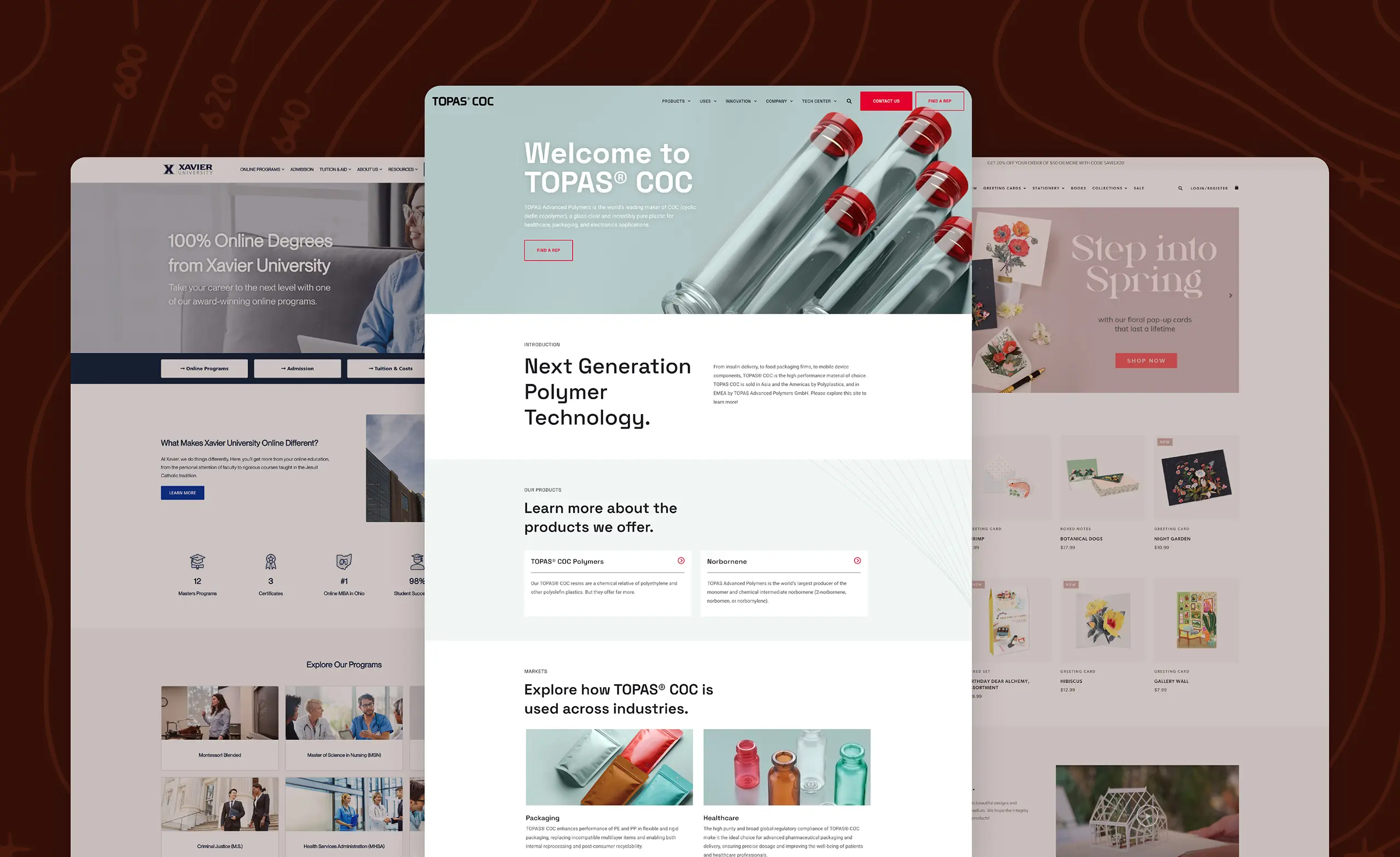

Design & Functionality
What level of customization and functionality is needed?
Not all websites are created equal. Some are completely custom-built, some are built with a template-based solution, and others are somewhere in between. If you’re building a simple site with a few static pages, a template may be sufficient. But if you need specific features, integrations, or unique design elements, a more customizable solution may be required.
At Expedition, we call the middle ground Flexible. Flexible sites are more economical than a completely custom site and more customizable than a template website. By utilizing user-friendly visual-based builders that reduce the need for hard coding, we can provide a flexible, scalable, and tailored website without the price tag (or timeline) of a completely ground-up build. Put simply, we can build a custom designed website with all the functionality you need that YOU can still edit yourself.
Options
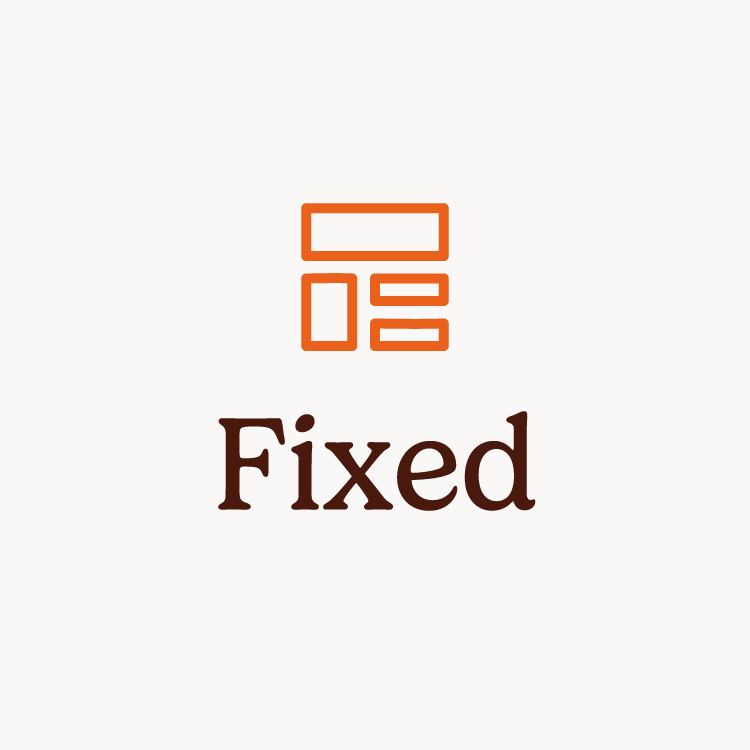
Fixed: Template-based build with some limitations. Ideal for small businesses, start-ups, and restaurants / bars with more generic site structure and predictable functionality.
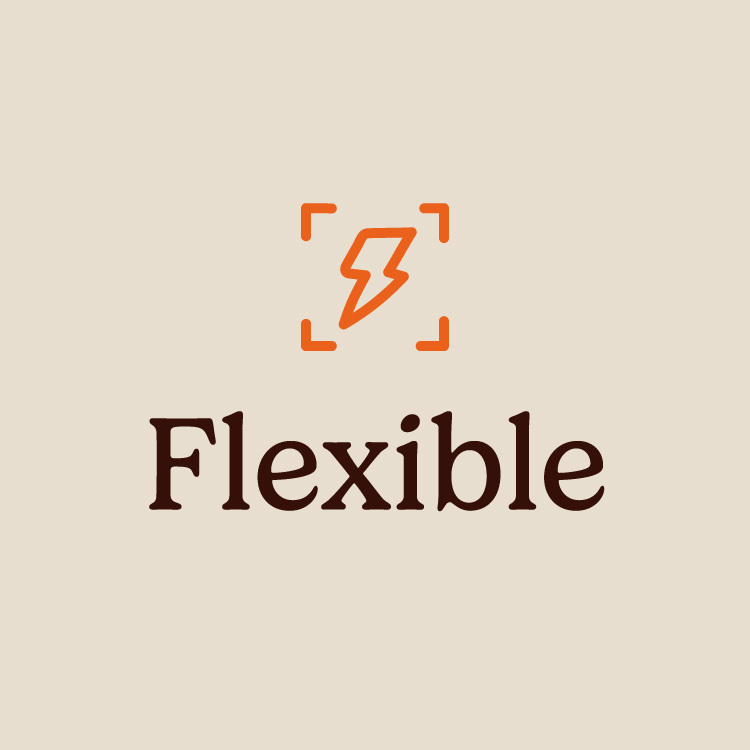
Flexible: Custom design with user friendly editing capabilities. Ideal for most clients and those that want custom design with limited hard coding for easier scalability and editing.
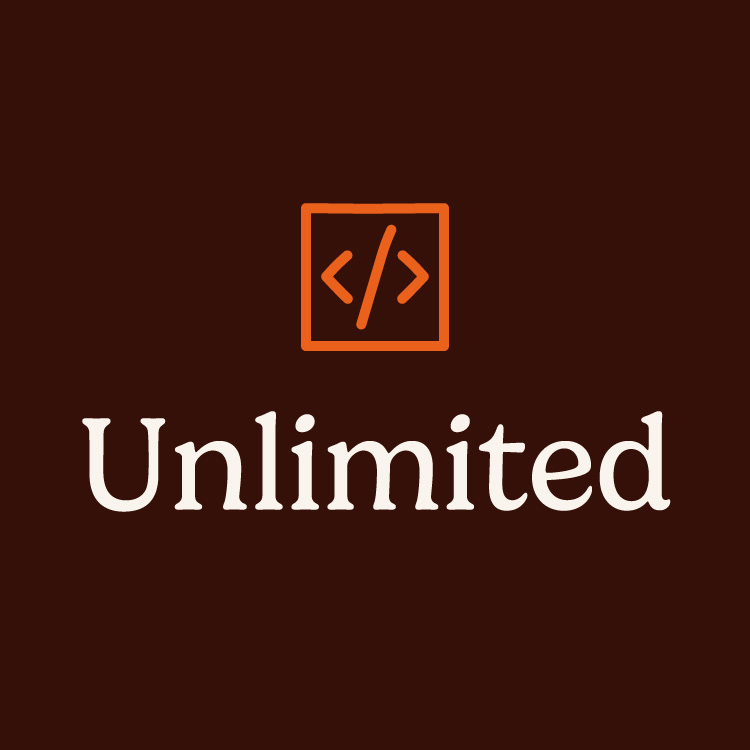
Unlimited: Designed and developed from the ground up. Ideal for businesses with complex requirements, advanced features, or highly specific user experiences.
Website Cost Factor
The more custom your website is, the more hours go into design, coding, testing, and revisions. With a Fixed site, you may be able to move faster, but your site may look and behave like many others. With a Flexible or Unlimited build, we’re able to better tailor the design and functionality to your needs but that means we’ll need more collaboration and in turn, more revisions to make sure you end up with an end product that works for your business.
How would you like to finalize project goals and expectations?
A successful website project starts with understanding your business, users, and goals. This question helps determine how much upfront strategy and collaboration you want. Some businesses are clear on what they need and can provide that in writing. Others prefer a more hands-on process where we guide them through structured discovery sessions.
Either approach can be a valid option for a website build of any size but generally, we’re going to recommend an expanded research and evaluation phase for sites over 50 pages. We frequently find this to lead to a more successful outcome. What’s important is choosing the level that aligns with your needs and comfort. More discovery means more clarity and long-term success, but it also requires more time and investment.
Options
Basic Research + Evaluation: Your business details, strategy, goals, objectives, and site expectations will be discussed via an initial Discovery Questionnaire followed by one Project Goals Workshop. Ideal for smaller websites or clients that feel comfortable providing written information and expectations.
Expanded Research + Evaluation: Together, we’ll discuss your brand, your business, strategy, goals, objectives, and site expectations through a series of four workshops in order to develop a clear project understanding and a solid starting point. Ideal for larger sites that require unique functionality or businesses that want a strategic marketing partner and holistic approach.
Website Cost Factor
The discovery phase can have a huge impact on the success of your website. With Basic Research + Evaluation, we can move quickly and launch sooner. However, this approach may miss strategic opportunities if your business goals or audience needs aren’t fully understood.
With Expanded Research + Evaluation, we dig deeper into your business, users, competition, content strategy, functionality needs, and long-term goals. This adds cost, but results in a more thoughtful, strategic, and effective website.
Get a personalized estimate for your website project in minutes.
Do you want us to evaluate and optimize site architecture?
Site architecture refers to how the pages and content of your website are organized and linked together. A clear structure makes it easy for users to navigate and find what they need, while also helping search engines index your content effectively. If your current sitemap is outdated or unorganized, it may provide an unoptimized experience for visitors and lead to lost opportunities.
This question determines whether we’ll work with your current structure or suggest improvements. Revisiting your site architecture [overall page structure] and information architecture [on-page content] allows us to strategically reorganize your pages based on your marketing goals, SEO strategy, and user behavior.
Options
Yes: We’ll propose changes to both the site architecture [overall page structure] and information architecture [on-page content] to create a framework best suited to your ongoing goals and objectives.
No: We’ll use your existing sitemap and content with limited optimizations.
Website Cost Factor
Improving site architecture typically adds upfront time to the project for planning, analysis, and collaboration. We may conduct content audits, navigation tests, or SEO evaluations to ensure the structure supports your goals.
While this adds cost early in the project, it often results in better user engagement, improved SEO rankings, and reduced friction during the customer journey which ultimately increases your ROI.
Do you want us to evaluate your existing site and competitors sites?
Before redesigning a website, it’s helpful to understand what’s working (and not working) in your current one. Evaluating your existing site allows us to identify technical issues, usability challenges, and content gaps. Looking at competitors can highlight industry standards and opportunities for differentiation. This part of the process provides a strategic analysis of your digital presence and the subsequent insights help us make more informed design and functionality decisions.
Options
Yes: We’ll gain valuable insights into the strengths and weaknesses of the current site, understand current user behavior, and make informed decisions to improve the new website through a review of the existing site. We also evaluate your competition helping us enhance your website’s user experience, while also identifying gaps to differentiate your brand and create a compelling online presence.
No: We’ll move forward based on provided content and goals.
Website Cost Factor
Additional research adds time to the discovery phase but gives us a strong foundation. Competitive analysis reveals how your site stacks up and uncovers ways to stand out. This level of research improves quality and ensures your new site is designed to compete in your market, but the extra strategy work adds to the total budget.
What additional site features do you need?
Every business has different functional needs depending on what their customers expect when visiting their website. Some sites may need just a simple contact form, while others might require more robust features like membership portals or event booking tools.
Identifying your feature set allows us to plan for development resources, third-party integrations, and user testing. It also ensures that the website is not just beautiful, but practical and capable of supporting your business goals.
Options
Advanced Contact Forms: Multi-step, conditional forms for detailed inquiries or sign-ups.
CRM Integration: Connect your website to HubSpot, Salesforce, or other CRMs.
Live Chat Integration: Real-time support via chat apps like Intercom or Tidio.
Multi-Language Support: Offer content in multiple languages for global users.
Advanced Analytics & Tracking: Implement Google Analytics, Hotjar, or custom tracking.
Accessibility Enhancements: Make your site compliant with ADA/WCAG guidelines.
Membership/Wholesale/Login Functionality: Secure user login areas for restricted content.
Event Calendar & Booking System: Schedule appointments, events, or reservations.
Social Media Integration: Embed feeds or social sharing features.
Website Cost Factor
Each additional feature adds complexity to the site. Some, like basic analytics or contact forms, are quick to implement. Others, such as login systems or multilingual functionality, require more planning, coding, and testing. Features that rely on third-party tools may also include additional setup or monthly costs.
These choices influence the scope and cost of your website project. The more advanced the feature, the more time and resources are required to ensure it works seamlessly and aligns with your goals.
What additional services do you need?
Your website doesn’t live in a vacuum — it’s part of your broader marketing strategy. That’s why we offer complementary services like branding, content creation, SEO, and paid advertising. This section helps us understand if you need help beyond just the website build.
Adding these services streamlines your project and ensures brand consistency across channels. It also reduces the burden on your internal team and gives your new site the content and traffic it needs to succeed from the day it launches.
Options
Updated Photography: Professional images to enhance credibility and storytelling.
Graphic Design & Branding Support: Ongoing help with visuals, icons, and brand materials.
Branding & Identity: Full brand refresh or new brand creation.
Search Engine Optimization (SEO): On-page, technical, and content optimization for Google.
Paid Advertising: PPC campaigns on Google, Facebook, LinkedIn, etc.
Social Media: Content creation, scheduling, and account growth strategies.
Conversion Rate Optimization (CRO): A/B testing and UX refinements to increase results.
Custom Illustrations & Infographics: Visual content to explain services or data.
Content Creation & Copywriting: New or additional copy for pages, blogs, and more.
Website Cost Factor
These add-ons expand the project beyond the website itself. They bring your marketing strategy to life, but also require additional collaboration and creative output. For example, writing conversion-focused copy is a different task than building site infrastructure.
Investing in these services can greatly improve ROI, especially for businesses looking to make an immediate impact post-launch. However, it’s important to factor them into your timeline and budget early on. Each of these are not included in the price initially since the scale of the project can change based on expectations and intended outcome.
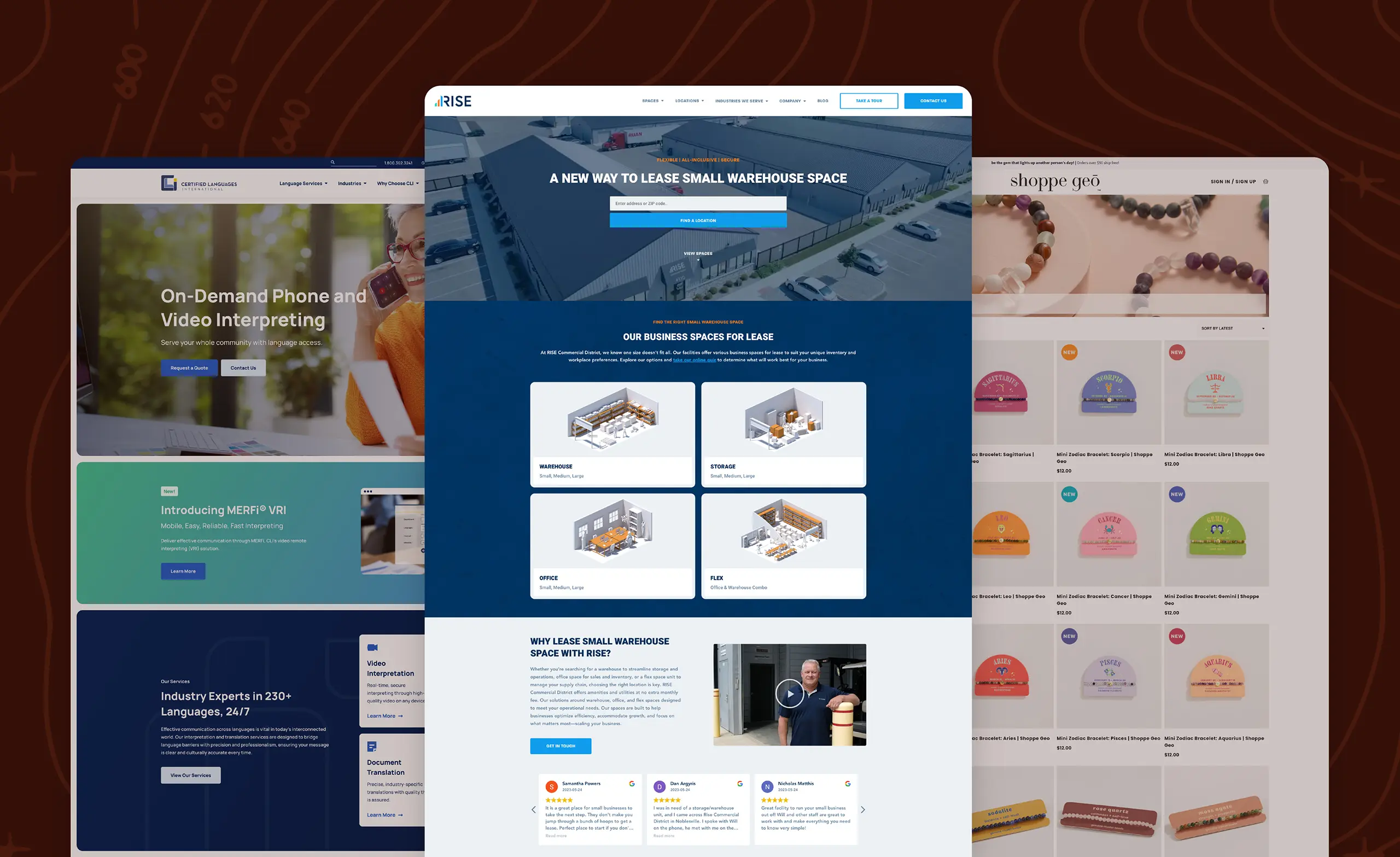

Project Logistics
Do you need hosting or ongoing support?
Once your website is live, it still needs care. Hosting is where your site lives, and ongoing support ensures that plugins, themes, and security protocols are up to date. Without it, your site may become vulnerable to security threats or performance issues over time.
Options
Website Hosting: Reliable infrastructure to keep your site live and fast.
Ongoing Support: Regular plugin updates, maintenance, and emergency fixes. We also offer an additional level of support through our Create-as-a-Service subscriptions if additional design and development hours are needed. These hours are offered at a discount and can be used outside of just the website.
Website Cost Factor
Hosting and support represent recurring costs that many businesses forget to plan for. While the monthly or annual fee may be small compared to the initial build, it’s crucial for long-term performance and security.
Without ongoing support, sites can fall out of date quickly — leading to bugs, broken layouts, and even security breaches. If you prefer a hands-off experience post-launch, this service is well worth including in your plan.
What is your preferred timeline?
Timelines matter not just to your internal planning, but also for the project’s cost and scope. Some clients have flexible launch dates and are fine with the standard process. Others may have time-sensitive events, product launches, or deadlines that require an accelerated timeline.
This question helps us understand your urgency so we can determine the best schedule to prioritize and pace your project accordingly.
Options
Standard Timeline: Our normal pace determined by the requirements of the project.
Accelerated Timeline: Prioritized build with some fast-tracking required.
Urgent Timeline: Highest priority, potentially requiring evening/weekend work or extra staffing.
Website Cost Factor
Tighter timelines may require us to reorganize our team and resources, assigning multiple team members to work in parallel. This can compress delivery time but raises the overall cost due to the need for extended hours or additional staffing.
Urgent timelines can also limit flexibility around revisions and discovery. While we do our best to maintain quality, a rushed timeline may reduce opportunities for deep exploration or optimization.
What are your preferred payment terms?
We understand that every business has different financial planning needs. This section allows you to choose a payment schedule that aligns with your cash flow while also rewarding upfront commitments.
Offering discounts for quicker payments helps us manage resources more efficiently and allows us to focus on delivering exceptional work without administrative delays.
Options
Paid in Full: We offer a 20% discount for paying the full amount upfront.
60 days of Less: We offer a 10% discount for completing payment in two months.
Standard Payment Terms: Our standard payment terms split the payments into 4 or 5 payments prior to site launch depending on the complexity and length of the project.
Website Cost Factor
Your payment terms won’t affect the design or development process directly, but they can impact the overall cost of the project. Upfront payments allow us to reserve priority scheduling and schedule key team members early on. Choosing the right plan ensures transparency and reduces friction as the project moves forward.
Get a personalized estimate for your website project in minutes.
Next Steps
Whether you’re starting a new business, refreshing an outdated website, or looking to improve online performance, understanding the cost of a website is an essential step. As you’ve seen throughout this guide, pricing isn’t just about design or code — it’s about strategy, content, functionality, and support. Each choice you make helps shape the final product and its ability to meet your business goals.
For business owners and marketers, especially those newer to digital projects, it’s easy to underestimate how much goes into a high-performing website. By taking the time to think through each question in our Website Cost Calculator, you’re setting yourself up for a more successful project — one with fewer surprises, clearer expectations, and better long-term results. If you’re ready to take the next step, here are a few good places to start:
Check out our free, Website Cost Calculator.
Head over to our free Website Cost Calculator to get a personalized estimate based on your business needs, goals, and technical requirements. It only takes a few minutes and will help you get clarity on scope and budget. No email is required to see the price estimate!
Learn more about Expedition.
See what, and how, we do what we do on our Web Design Services page or learn about our Creative-as-a-Service subscriptions if you’re looking for a flexible, ongoing partnership.
Reach out to our team.
Still have questions? We’d love to help. Get in touch or schedule a call with our team. We’ll walk through your goals and see if we’re a good fit to support your project.
